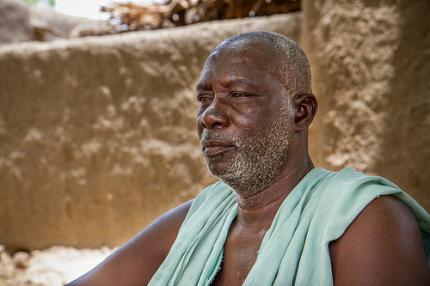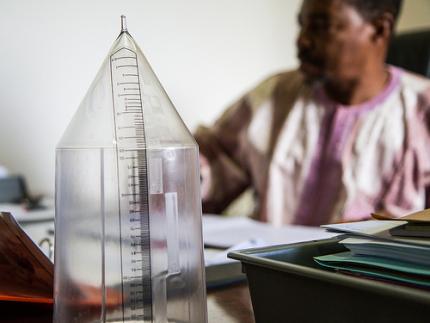
 U.S. farmers have unprecedented access to climate tools, information and forecasts. These range from a general El Niño/La Niña seasonal outlook to more regional-specific tools such as AgroClimate, a suite of easy-to-use products for fruit, corn, and soy growers and ranchers in the Southeast of the country. These tools can’t prevent a drought, but with the click of the mouse or the swipe of a smartphone, they can tell farmers in almost real-time how changing conditions will affect their bottom line, several months ahead of the harvest.
U.S. farmers have unprecedented access to climate tools, information and forecasts. These range from a general El Niño/La Niña seasonal outlook to more regional-specific tools such as AgroClimate, a suite of easy-to-use products for fruit, corn, and soy growers and ranchers in the Southeast of the country. These tools can’t prevent a drought, but with the click of the mouse or the swipe of a smartphone, they can tell farmers in almost real-time how changing conditions will affect their bottom line, several months ahead of the harvest.Of course, access is one thing. Knowing how to use that information effectively is another entirely. Even in a data-rich environment such as Florida, farmers are still learning how to use these tools to make meaningful decisions that can improve their bottom line.

Thousands of miles away and worlds apart in Mali, farmers face a similar problem but use different methods to overcome it. Travel to the most remote parts of the country and you'll meet farmers such as 70-year-old Brehima Konaté, chief of Diouna, a village in Mali’s Sahel region situated about 200 miles northeast of the capital, Bamako.
“We listen to the radio to hear rainfall related information and the right timing for planting, we also use traditional knowledge,” Konaté says. “We learn how to apply fertilizers at the appropriate timing. We were told to change the way we used to apply them and that we needed to do it right.”

In 1982, Mali’s national meteorological service began supplying poor, remote farmers with agro-meteorological information to help them decide when and what to plant and when to fertilize their crops. The program arose in response to widespread, devastating famines across the Sahel caused by series of prolonged droughts in the 1970s and 1980s. Konaté, like most of this fellow farmers in Mali and its neighboring countries, doesn't have access to irrigation. If the rainy season starts late, or underperforms -- as it did last year in the Sahel -- there's not much he can do once he has planted his crops.
By providing farmers with forecast information at critical points ahead of the growing season and throughout it, Mali's meteorological agency hopes to help Konaté and his fellow farmers across the country better manage the risks associated with a highly variable rainy season.

According to the agency, more than 2,500 farmers have already benefitted from the program. The services offered may not be as sophisticated as those that American farmers have access to, but they are critical to their livelihoods nonetheless. “If you apply the information rigorously, then your production will surely increase,” says Konaté.
“This type of project is vital for farmers living in the Sahel area, where extreme weather and climate events are pushing farmers beyond their natural capacity to cope with change,” says Dr. Robert Zougmoré, who leads work in West Africa for the CGIAR Research Program on Climate Change, Agriculture and Food Security (CCAFS).
 CCAFS brings together the world’s leading researchers in agricultural science, development research, climate science and Earth System science to help farmers in developing countries overcome threats to agriculture and food security in a changing climate.
CCAFS brings together the world’s leading researchers in agricultural science, development research, climate science and Earth System science to help farmers in developing countries overcome threats to agriculture and food security in a changing climate.
“Right now, it’s possible to predict climate conditions in advance of planting seasons in much of Sub-Saharan Africa,” says Dr. James Hansen, a CCAFS researcher based at Columbia University’s International Research Institute for Climate and Society (IRI). “But this information either doesn’t reach farmers, or reaches them in a form that is difficult to relate to their own farms. We're studying Mali’s pioneering efforts in Africa to understand what made them successful and how it could become a model for other countries at risk,” Hansen says. The study in Mali is funded by CCAFS and the U.S. Agency for International Development (USAID), which is interested in enhancing food security in the region.
Researchers like Hansen and Zougmoré say that government ministers and donors need to consider investing in such tools as relatively low-cost means to rapidly and effectively improve food security in an increasingly uncertain world. This is as important in Mali’s Ségou Region as it is in the parts of the U.S. currently afflicted by the drought and parts of the country like the Southwest, which will likely see drought occurring more frequently and severely due to climate change.
donors need to consider investing in such tools as relatively low-cost means to rapidly and effectively improve food security in an increasingly uncertain world. This is as important in Mali’s Ségou Region as it is in the parts of the U.S. currently afflicted by the drought and parts of the country like the Southwest, which will likely see drought occurring more frequently and severely due to climate change.
Read more:
Policy Brief: Agro-climate tools for a new climate-smart agriculture
View pictures from Francesco Fiondella's Mali trip on CCAFS Flickr page.
This report was adapted from a blog post at Climate Change SOS, written by Vanessa Meadu - Communications Manager at CGIAR Research Program on Climate Change, Agriculture and Food Security (CCAFS), with input from Francesco Fiondella and Brian Kahn, who run communications for the International Research Institute for Climate and Society (IRI). All photos by Francesco Fiondella.